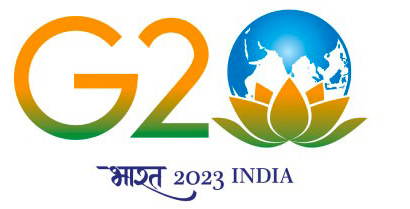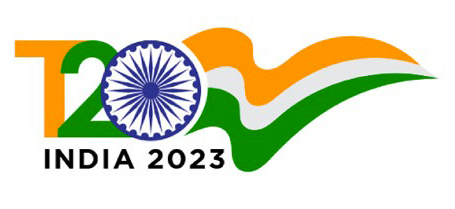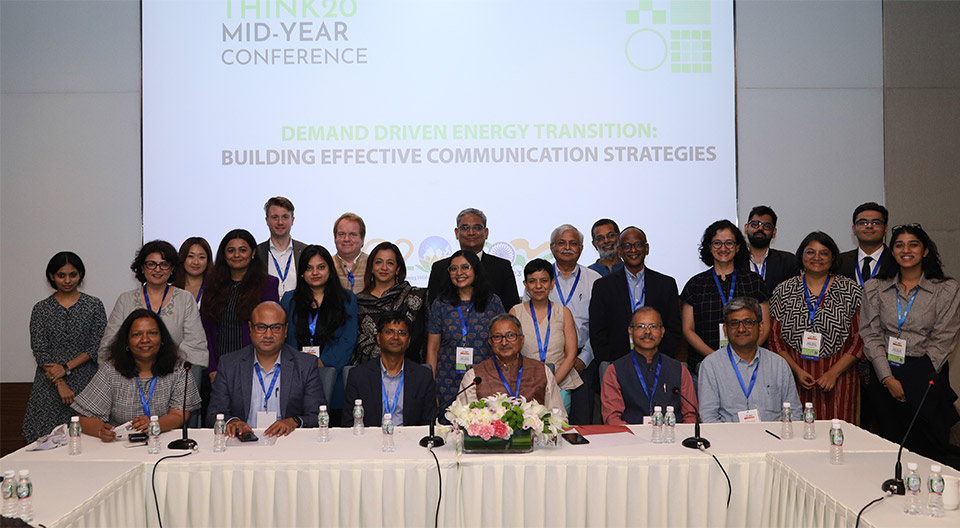Demand-driven energy transition: Building effective communication strategies
Over the last few years, there have been public discussions on issues related to just transition and India’s transition to clean energy and netzero targets. As India moves towards the target year of 2030, these discussions would need to delve into greater detail and nuance of the mitigation process that are needed to meet our ambitions. The participants in the Working Group have expertise in the technical aspects of the transition process, but for the policies to become broad-based action, there is a need to understand what can be communicated through which media; what are the relative strengths of each channel; and what demographic group each media reach. The short intervention by the panellists and the brainstorming will match each tool with the message.
Guiding questions for discussion:
● What are the areas of communication that have had the greatest impact on you?
● Which are the areas where you did not have communication impact?
● What were the bottlenecks you faced while communicating with the policy makers?
● Where did you face an obstacle while communicating with the larger public?
● What would you think should be the main elements of a communication strategy for energy transition?
The meeting started with S. Gopikrishna Warrier, Managing Editor at the environment news portal, Mongabay-India, laying out the premise: a discussion on the communication strategies needed for ensuring buy-in from multiple stakeholders on India’s energy transition process. He elaborated that the situation we face is unique. Typically, normal development paradigms require “upward” communication, where the messaging needs to reach policymakers. However, for India’s energy transition process, it is downward. There is a clear message from the national leadership, and the challenges are with the following stakeholders: the public, the media, and practitioners. The main driving force of India’s upcoming energy transitions would be the public.
Warrier provided the analogy of smoking. Over decades, in the second half of the 20th century, smoking went from being a fashion statement to a much-maligned public health hazard. This transition happened because of public buy-in and the realisation of health hazards, not because of governmental policy.
The need of the hour, for India’s energy transitions, is using the appropriate medium at the appropriate time, said Warrier. “We will not be able to come up with the entire strategy in 90 minutes. However, let us come up with the building blocks of the communications strategy, which we can go back and think through and implement,” he said.
Nilanjan Ghosh, Director, Observer Research Foundation, provided an economist’s perspective, focusing on the hidden costs of the energy transition. He quoted a recent McKinsey Sustainability report, which pegs the annual expenditure on energy, mobility, industry and other land use at US$ 9.2 trillion, when “you account for the unaccountable.” He stressed on how imperceptible costs are often ignored, which arise due to the uncertainties associated with change. He spoke on the necessity of a green taxonomy—a framework of green finance, greenwashing, etc.
Taking the discussion forward, Debajit Palit from the NSB-NTPC School of Business spoke about the need for an “earth-centric, rather than just a people-centric energy transition.” He pointed out that most programmes have been supply-driven, not demand-driven, because the consumer viewpoint is usually not taken into account. Communities in rural and urban areas, people of different genders, and owners of industries—for example,MSMEs versus cottage industries— would all need different communications strategies.
Vinay Rustagi, Bridge to India, a knowledge services provider, raised the question, “How do we induce demand among consumers?” In India, retail customers are 40-45 percent of the total consumers, but their share in RE installations is less than 5 percent, he said. He then articulated the challenges to the end consumer, ranging from low awareness, different priorities (livelihood and economic upliftment rather than environmental health), and the complex subsidies landscape. He called for the creation of unbiased, independent content that breaks available information into bite-sized pieces.
From a communicator’s perspective, Sreerekha Pillai, Centre for Study of Science, Technology and Policy (CSTEP), spoke on the ecosystem approach, vouching for collaborations, a diverse communication strategy that includes social media for the younger demographic, avoiding jargon, and incorporating communications as an integral part of the project from the very beginning.
An experienced journalist who has been working on energy transitions, Kundan Pandey, Mongabay-India, spoke about how irrespective of policy-level changes and different conversations around implementation, the story from the ground is different. It is apparent that technology does not reach the last mile, since people talk of apathy. The COVID pandemic brought this to light, when there was a highly unequal education among children, based on the availability of electricity, internet and smart devices.
With this round of initial remarks to seed conversations, the roundtable entered into a free-flowing discussion, the highlights of which are captured below.
Biswajit Roy, the Director General of the Gujarat Energy Research and Management Institute (GERMI), spoke of the importance of involving people from the ground in schemes, citing the KUSUM Yojna, which facilitates the use of solar energy for irrigation, as an example. He recommended using panchayats as nodes of information sharing, over and above social media and newspapers.
Noura Y. Mansouri, King Abdullah Petroleum Studies and Research Center, spoke about the challenge of setting up communication systems that would nudge individual behaviour, especially non-interventional messaging that can influence voluntary energy efficient behaviour. Almas Naseem, Programme Communication Associate, World Resources Institute, echoed this sentiment, adding the importance of outreach in regional languages.
The differences between the kinds of choices faced by rural and urban people when it comes to renewable energy were illustrated by Srestha Banerjee, Director of Just Transition,International Forum for Environment, Sustainability & Technology (iFOREST). In the urban sector, people have the luxury of choice: adopting renewables is a lifestyle choice. On the other hand, the choice of people whose livelihood depends on the the industry or the energy source the policy is trying to phase out (coal/oil), the choice becomes a bread-and-butter issue. Accordingly, the communication strategy needs to be tailored. It is better to speak short term rather than long term, include alternatives to the existing normal and bring in stakeholder engagement at all levels, including state and district level government machinery, she said.
Ashok Srinivas, a Senior Fellow at Prayas, mentioned that asking people to take a “bitter pill” when it comes to energy transitions is a tricky proposition – meaning, some people will lose out in the energy transition process, being unable to handle it, as Bannerjee was mentioning. In the Indian context, it is also unfair to ask people to take the bitter pill, especially if they have been suffering for generations, he added. Communicating to industries or corporate entities which can handle expensive transitions, and not just individuals and communities, is key, he said.
Nicolas J.A. Buchoud, Grand Paris Alliance for Metropolitan Development, France, spoke of the need for “maximum citizenship” and not just maximum cities, making a play on the event being held in Mumbai. With the thrust on technologies and supply chains, he said, citizens are being left behind and this can backfire. Many changes to existing civil societies are engineering and policy-driven, rather than demand-driven, and governments are reluctant to give space to disagreements, fearing that disagreements could lead to deferred decisions, he said. There will be far less tolerance from civil society if they are not listened to, he added.
“Scientists are bad communicators,” said Dr Vibha Dhawan, Director General, The Energy and Resources Institute (TERI). However, effective communication is the strongest tool for policy uptake, especially since public perception can determine why a new technology succeeds or fails, she said. Currently, academicians and policymakers do not advertise the studies done and regulations available in the most effective manner, and simple questions regarding the maturity of technologies and what would happen to price, remain unanswered in people’s minds, resulting in confusion and lack of uptake, she said.
Ambassador D P Srivastava, a Distinguished Fellow, Vivekananda International Foundation, spoke on the costs of India’s energy transition. Local-level solutions are not the answer to India’s energy transition ambition, he said. “A renewableheavy approach will cost 15+ trillion USD for net zero,” he said. This would mean an increase in the end price of electricity among consumers, with tariff going up by three times. The choices before us are complex, he said, and will affect all sectors.
Taking off from his point, Swetha Ravikumar from FSR Energy spoke of the importance of going beyond positive messaging and preparing the public for taking shocks from such landscape-level policy changes.
Gunjan Jain from Climate Trends on the challenge of planning aspirations of the entire population, which needs to transition the energy production, while accommodating growth – a growing population and an aspirational middle class. Added to the milieu, research has shown that there are no local language equivalents for most of the technical terms that are used in energy transition communication.
From a technology uptake perspective, Francis Jayasurya, the Global Wind Energy Council, spoke about how clean technologies need “evangelists” that take messages to the right people at the right time.
Summarising the discussions, Gopikrishna Warrier said that perhaps it was for the first time such a discussion was being held, that focused on communication for India’s energy transition. This session marked the beginning of a process that will continue.
He reiterated that a message only works when the recipients are clear that they gain if they take a particular action, and would stand to lose if they don’t. That is why it is necessary to take the energy transition discussions to the demand end so that the consumers understand how they can benefit from it and can communicate what are their specific needs.
Warrier summarised the participants’ view that the energy transition process is not an entirely rosy picture. There will be pain in the transition and that has to be communicated. What are the costs? The estimation should also include the calculation of the hidden costs and hidden benefits so that the entire picture is clear. Only then will the energy transition process be equitable and have distributional justice. The thrust should be on communicating the impact of immediate decisions by the consumers—the costs and benefits, and the pros and cons. Once the first-mile issues are taken care of, the communication channels will open all the way through.
This event report has been compiled by Mannat Jaspal





